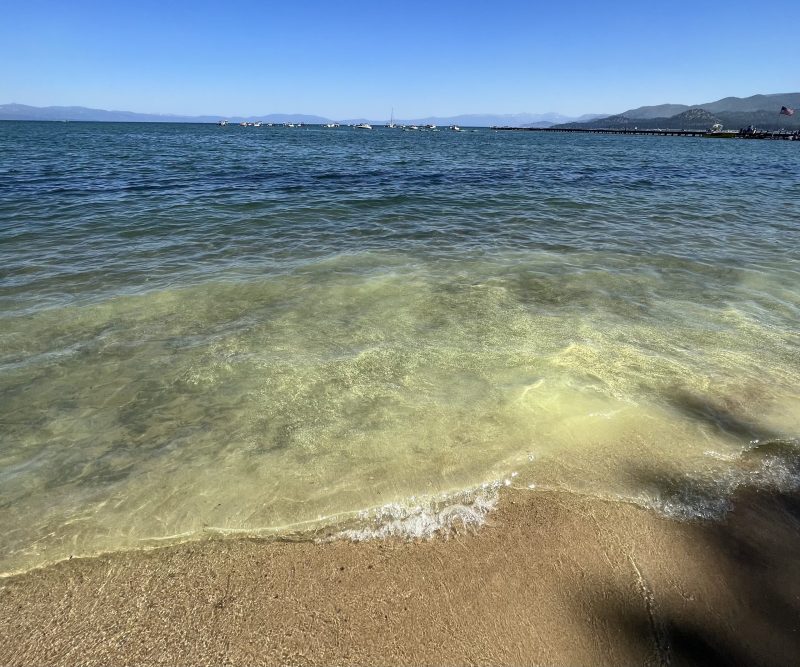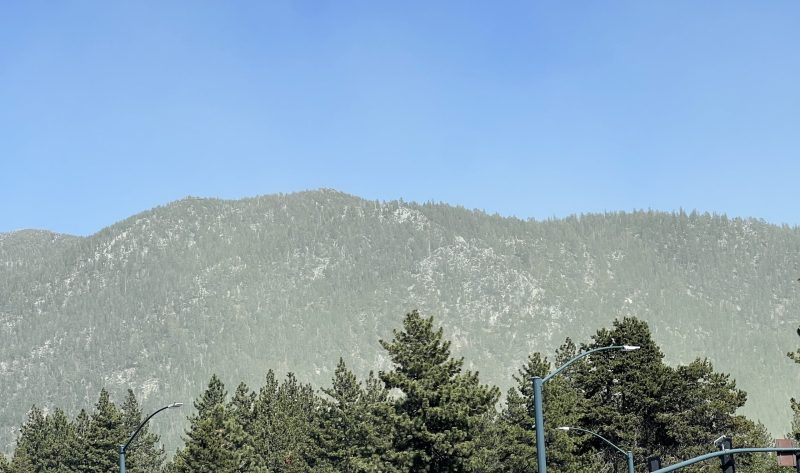
After a record-breaking winter filled with an astonishing amount of snowfall and a spring that brought abnormal and prolonged cold weather and rain, a heavy wave of pollen has finally arrived at (and in) Lake Tahoe. It’s visible on cars and on the streets, pools into piles on the shores of the lake, and even creates clouds from strong wind blowing it out of the tall pine trees.
Every year, usually in June and July, when the cooler weather fully departs and the warm weather finally stays consistent, the major blooming begins. Big winters like this last 2022-23 season cause not only a delay in the arrival but also a much more burdensome amount of pollen when it ultimately appears.

The main culprits creating the excessive pollen are male pine cones. Only productive during warmer weather, up to a staggering five pounds of pollen can be produced by a single pine cone in less than one month. Thanks to wing-like cells, that pollen can travel hundreds of miles from where it originally started, while potentially pollinating other trees along the way.
The trees, grass, and plants in the area stir up a ridiculous amount of pollen that coats everything it comes in contact with, and can be especially problematic for those with bad allergies and asthma. However, having an allergy to pine cone pollen is unlikely for most, and more likely to be from other trees and typical dust, dander, and grass pollen. Keeping windows closed, bathing before bed, and washing bedding in hot, soapy water weekly before machine drying are all recommended steps to help avoid allergy and asthma symptoms.
The huge winter back in 2018-19 (650″ at Palisades Tahoe) caused pollen counts to reach as high as 199 PPM by July. This past season Palisades reported over 720″, with over 200″ of that coming in March and April. Will the pollen counts exceed 200 PPM after the wet winter and spring just experienced by Tahoe and will that cause more vegetation to bloom later in the year?